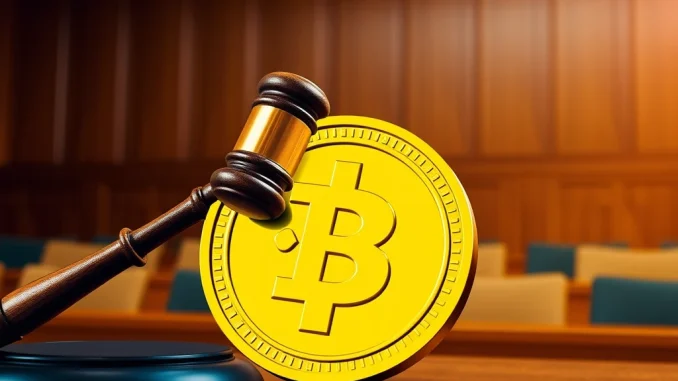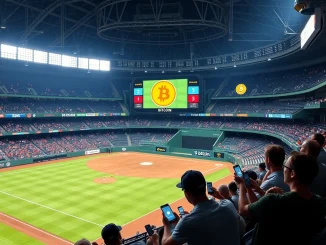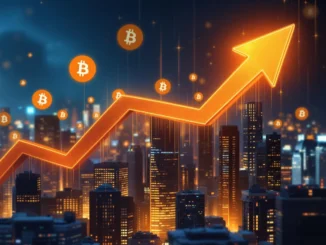
In a stunning turn of events in the ongoing saga between the U.S. Securities and Exchange Commission (SEC) and cryptocurrency giant Binance, both parties have jointly requested another 60-day suspension of their high-stakes legal battle. Just when we thought the courtroom drama was about to escalate, a surprising request for a pause has emerged, leaving the crypto community buzzing with questions. What exactly does this mean for the future of crypto regulation and the industry as a whole? Let’s dive into the details of this developing story.
Why Another Pause in the SEC & Binance Litigation?
According to insights shared by Eleanor Terrett, host of Crypto In America on X (formerly Twitter), the SEC and Binance have cited “productive discussions” as the primary reason for seeking this second 60-day pause. These discussions reportedly revolve around the activities of the SEC’s Cryptocurrency Task Force. This suggests that behind the scenes, constructive dialogues are taking place, potentially aimed at finding common ground or exploring avenues for resolution outside of the courtroom.
This isn’t the first time the court has granted such a request. Back in February, an initial 60-day suspension was approved, indicating a willingness from both sides to explore alternatives to immediate legal confrontation. The current request reinforces the idea that both the SEC and Binance recognize the potential benefits of continued dialogue.
The Benefits of Pausing Crypto Litigation: What’s in it for Everyone?
A pause in litigation, especially in a complex and high-profile case like SEC vs. Binance, can offer several significant advantages for all parties involved. Let’s break down some key benefits:
- Facilitates Constructive Dialogue: Litigation can often be adversarial, creating a combative environment that hinders open communication. A pause provides a window for both sides to engage in more relaxed and productive discussions. This can lead to a better understanding of each other’s positions and potentially pave the way for negotiated settlements or resolutions.
- Reduces Immediate Legal Costs: Legal battles, particularly those involving regulatory bodies and major corporations, can be incredibly expensive. Suspending litigation, even temporarily, can provide cost relief, allowing both parties to reallocate resources and potentially invest in more constructive solutions.
- Minimizes Market Uncertainty: Ongoing, aggressive litigation can create uncertainty and volatility in the cryptocurrency market. News of legal clashes can trigger market dips and investor anxiety. A pause, especially when framed as a period of “productive discussions,” can inject a degree of stability and reassure market participants.
- Explores Alternative Resolutions: Litigation is not always the most efficient or effective path to resolution, especially in rapidly evolving fields like cryptocurrency. A pause allows both the SEC and Binance to explore alternative dispute resolution methods, potentially including mediation or arbitration. These methods can sometimes lead to faster and more mutually agreeable outcomes compared to protracted court battles.
- Allows for Regulatory Clarity: The crypto industry is still navigating a complex and often unclear regulatory landscape. Discussions during a litigation pause could contribute to greater clarity on regulatory expectations and compliance requirements, benefiting not just Binance but the broader crypto ecosystem.
Challenges and Potential Roadblocks in SEC & Binance Discussions
While the pause in litigation and the promise of “productive discussions” are encouraging, it’s crucial to acknowledge potential challenges and roadblocks that could arise:
- Differing Objectives: The SEC’s mandate is to protect investors and ensure market integrity. Binance, as a global cryptocurrency exchange, operates with business objectives that may sometimes clash with regulatory goals. Finding common ground that satisfies both mandates can be complex.
- Scope of SEC Investigation: The SEC’s investigation into Binance is likely broad, encompassing various aspects of its operations. Reaching agreements on all fronts might prove difficult, and disagreements on specific issues could derail the progress of discussions.
- Enforcement Actions vs. Dialogue: The SEC has a history of taking enforcement actions against crypto firms. Balancing the pursuit of enforcement with the willingness to engage in dialogue requires a delicate approach. There’s always a risk that discussions could break down, leading to a resumption of aggressive litigation.
- Transparency Concerns: While “productive discussions” are mentioned, the specific details of these discussions remain largely undisclosed. Lack of transparency can breed speculation and mistrust within the crypto community. Stakeholders are eager for more clarity on the issues being discussed and the potential outcomes.
- Time Constraints: Even with a 60-day pause, time is limited. Complex regulatory and legal issues often require extensive negotiation and compromise. Whether a 60-day period is sufficient to achieve meaningful breakthroughs remains to be seen.
Crypto Regulation and the Bigger Picture
The SEC vs. Binance case is not just about two entities; it’s a pivotal moment for crypto regulation in the United States and globally. The outcome of this situation, whether through litigation or negotiated settlement, will likely set precedents for how regulatory bodies approach cryptocurrency exchanges and the broader digital asset industry.
Here are some key aspects to consider regarding crypto regulation in the current landscape:
| Aspect | Description |
|---|---|
| Clarity Needed | The crypto industry has consistently called for clearer regulatory guidelines. Ambiguity in regulations hinders innovation and compliance. The SEC’s actions and discussions with Binance could contribute to or detract from this needed clarity. |
| Global Coordination | Cryptocurrencies operate globally, while regulations are often national. International cooperation among regulatory bodies is crucial to prevent regulatory arbitrage and ensure consistent standards across jurisdictions. |
| Innovation vs. Protection | Regulators face the challenge of balancing investor protection with fostering innovation in the crypto space. Overly restrictive regulations could stifle growth, while insufficient oversight could expose investors to undue risks. |
| Decentralization Dilemma | The decentralized nature of many cryptocurrencies and blockchain technologies presents unique regulatory challenges. Traditional regulatory frameworks designed for centralized institutions may not be fully applicable to decentralized systems. |
Actionable Insights: What Should Crypto Enthusiasts Watch For?
For anyone invested in or following the cryptocurrency world, the SEC & Binance litigation pause and subsequent discussions are critical to monitor. Here are some actionable insights:
- Stay Informed: Keep abreast of news and updates regarding the SEC vs. Binance case. Follow reputable crypto news sources and analysts for the latest developments.
- Monitor Market Reactions: Pay attention to how the cryptocurrency market reacts to news related to the litigation and regulatory developments. Market movements can provide clues about investor sentiment and potential future trends.
- Understand Regulatory Landscape: Educate yourself about the evolving regulatory landscape for cryptocurrencies in your jurisdiction and globally. This knowledge is crucial for making informed investment decisions and navigating the crypto space responsibly.
- Engage in Dialogue: Participate in constructive discussions about crypto regulation within the community. Your voice and perspectives can contribute to shaping a more balanced and effective regulatory environment.
- Prepare for Different Scenarios: Recognize that the SEC vs. Binance situation could unfold in various ways – from a negotiated settlement to a resumption of aggressive litigation. Be prepared for different outcomes and their potential impact on the market.
A Moment of Hope or Just a Temporary Truce?
The second 60-day pause in the SEC & Binance litigation is undoubtedly a significant development. Whether it represents a genuine step towards resolution and greater regulatory clarity, or simply a temporary truce in a larger battle, remains to be seen. The crypto community will be watching closely, hoping that these “productive discussions” pave the way for a more constructive and sustainable future for cryptocurrency regulation and innovation. This unexpected pause offers a glimmer of hope in a complex and often turbulent landscape, reminding us that even in high-stakes legal clashes, dialogue and diplomacy can still play a crucial role. The next 60 days could be pivotal in shaping the trajectory of crypto regulation and the future of Binance and the wider digital asset ecosystem.



